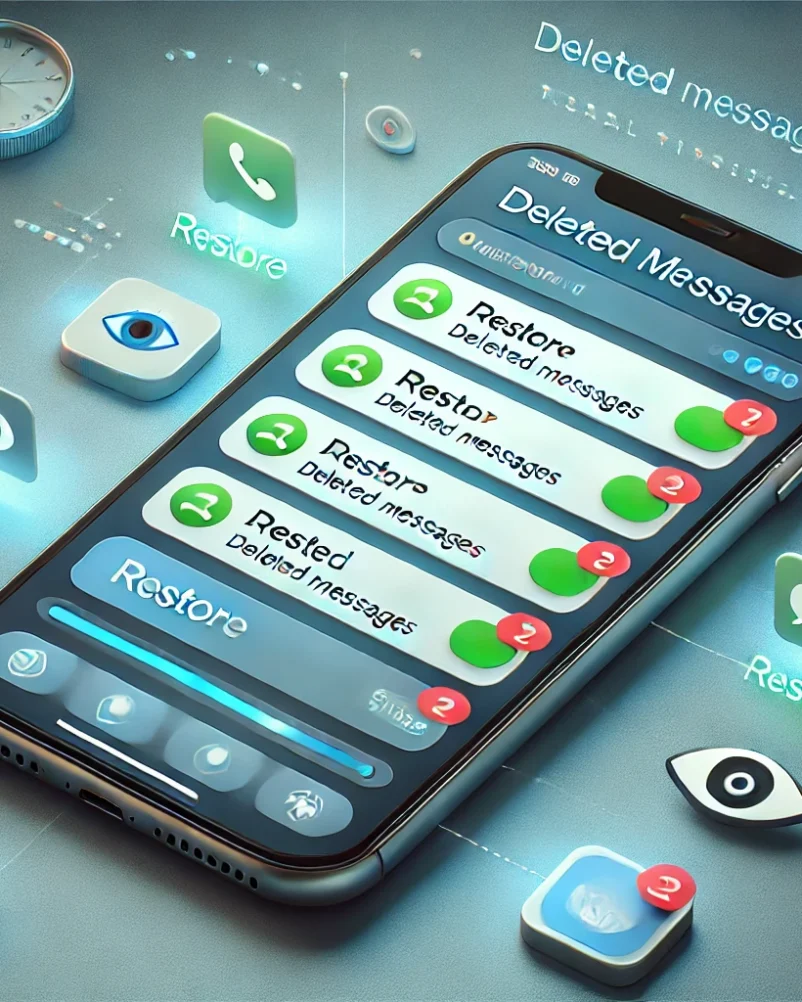Anúncios
“Learn how to identify trustworthy apps for recovering deleted files on your phone and avoid risks like data loss, malware, or information theft.”
Why Choosing Trusted Apps for File Recovery Is Essential
Have you ever accidentally deleted important photos, messages, or files on your phone?
It’s a sinking feeling — and the first instinct is to find an app that promises to restore everything.
However, not all apps are created equal. Some may successfully recover your files, but others could compromise your security, bombard you with ads, or even harm your device.
With so many recovery apps on the market, how do you know which ones to trust? In this article, you’ll discover:
• The potential dangers of untrusted apps.
• How to recognize reliable apps for file recovery.
Anúncios
• Step-by-step solutions for recovering lost data safely.
Let’s dive in and equip you with the knowledge you need to recover files without risking your data or device.
The Risks of Using Untrusted Apps
When desperation strikes after data loss, it’s easy to trust the first app you find online.
However, unverified or poorly designed apps can introduce more problems than they solve.
Below are the key risks you face:
1. Data Theft
Untrusted apps often require access to your files, messages, and storage systems to perform recovery.
Malicious apps take advantage of these permissions to steal sensitive data, including:
• Photos, videos, and personal messages.
• Contact lists and call logs.
• Financial details saved on your phone or within apps.
Once stolen, this data could be sold on the dark web, leading to identity theft or financial fraud.
2. Malware and Viruses
Some recovery apps are designed solely to deliver malware or spyware to your phone.
These apps may appear legitimate but contain harmful code that:
• Slows down your phone’s performance.
• Tracks your activity, including passwords and private messages.
• Opens backdoors for hackers to access your device remotely.
3. Irreversible Data Loss
Many poorly designed recovery apps lack the sophistication required to retrieve lost files without further damaging your device.
They may:
• Overwrite deleted files, making them impossible to recover.
• Corrupt other files on your device during the recovery process.
4. Hidden Costs
Untrusted apps often lure users with promises of free services, only to charge exorbitant fees later.
These apps may:
• Lock recovery results behind a paywall after scanning your device.
• Implement recurring subscription fees without clear disclosure.
How to Identify a Trusted File Recovery App
To avoid the risks mentioned above, you need to carefully evaluate any app before downloading.
Here’s what to look for in a trusted recovery app:
1. Available on Official Stores
Always download apps from recognized platforms like the Google Play Store or Apple App Store.
These platforms vet apps for safety and remove those with malicious behavior.
Avoid downloading APK files from third-party websites, as they are not subject to the same level of scrutiny.
2. Reputable Developer
Trusted apps are often developed by companies with a history of creating reliable software.
Look for:
• Apps developed by well-known companies specializing in data recovery.
• Clear branding and developer profiles linked to websites or support channels.
3. User Reviews and Ratings
Read user reviews thoroughly, paying attention to:
• The app’s overall rating (preferably 4.5 stars or higher).
• Comments describing successful recovery processes.
• Complaints about crashes, unexpected fees, or security issues.
4. Requested Permissions
A good app will only ask for permissions necessary for its functionality.
Be wary of apps requesting access to:
• Your microphone, camera, or contacts (unrelated to recovery tasks).
• Full device control or remote access.
5. Transparent Privacy Policy
Before installing an app, read its privacy policy to understand:
• How your data is used during and after recovery.
• Whether the app stores or shares your data with third parties.
Examples of Trusted vs. Untrusted Apps
Trusted Apps:
• DiskDigger: Specializes in photo and video recovery on Android, with clear instructions and a straightforward interface.
• Dr.Fone: Offers multiple recovery solutions for various file types, including contacts, call logs, and messages.
• EaseUS MobiSaver: A robust tool for recovering data on iOS, with high ratings and consistent performance.
Untrusted Apps:
• Unverified APKs: Many APKs downloaded from unknown websites are untested and could harm your device.
• Poorly Reviewed Apps: Apps with frequent complaints about malware, crashes, or scams.
Step-by-Step Guide to Safely Recover Files
Step 1: Determine the Lost File Type
Start by identifying what type of data you need to recover, such as photos, videos, messages, or audio files.
This will help narrow down the best app for the task.
Step 2: Research the App
Search for reviews and guides on trusted tech websites to confirm the app’s reliability.
Step 3: Avoid Overwriting Data
As soon as you notice the data loss, stop using your phone for other tasks.
Overwriting deleted files reduces the likelihood of recovery.
Step 4: Backup Remaining Files
Before proceeding, back up all existing files using Google Drive, iCloud, or an external device.
Step 5: Follow Recovery Instructions
Use the app’s step-by-step guide to scan your device and retrieve lost files.
Most trusted apps have intuitive interfaces to help even non-tech-savvy users.
Real-Life Example: Recovering Vacation Photos with DiskDigger
A user accidentally deleted vacation photos from their Android phone.
Instead of panicking, they installed DiskDigger and followed the app’s instructions:
• Scanned internal storage for deleted files.
• Previewed recoverable images before restoring them.
• Saved the recovered photos to an external storage device.
Within minutes, most of the photos were successfully restored — a testament to the app’s reliability.
Protecting Yourself from Untrusted Apps

To ensure long-term safety and avoid future data loss, follow these tips:
• Install Antivirus Software: Use reputable antivirus tools to identify and block malicious apps.
• Update Your OS: Regular updates patch security vulnerabilities, reducing the risk of malware.
• Regular Backups: Use cloud services or external storage to create backups, minimizing dependency on recovery apps.
Benefits of Using Trusted Apps
• High success rates in recovering lost files.
• Assurance of data safety and protection.
• Transparent policies for fair use and fees.
• Peace of mind knowing your device remains secure.
Struggling to recover lost data?
Explore our in-depth guide to trusted recovery tools and take the first step toward protecting your files and device security.
Related Topics
• Best Apps for Cloud Backups
• How to Prevent Data Loss on Your Smartphone
• Essential Security Tips for Mobile Devices
• Top Tools to Optimize Phone Performance
• How to Recover Photos Safely Without Risking Data Theft



